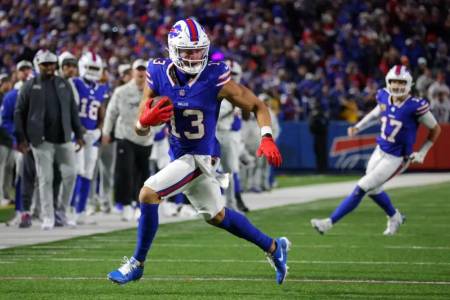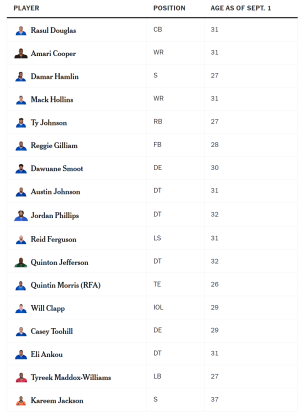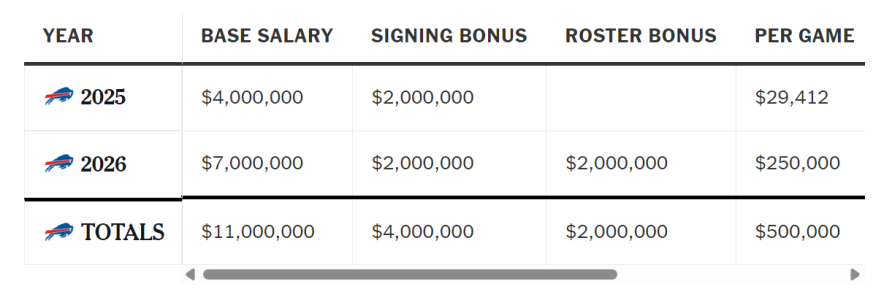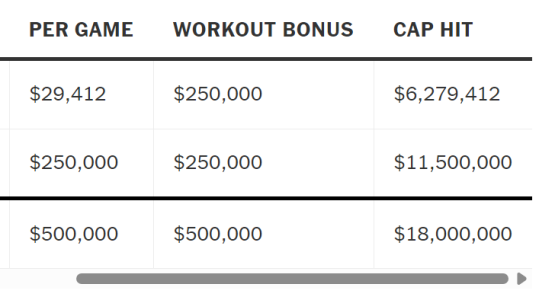
Bills mock offseason: Free agents, draft plans, and trade markets
The championship window is wide open for the Bills and that will impact their offseason moves.

The 2025 NFL Combine is just days away, and it remains one of the most informative weeks of the entire offseason. It’s when teams start to get an idea of both the free agent and trade markets, two places the Bills could tap into relatively soon.
After a slightly unexpected return to the AFC Championship Game, general manager Brandon Beane will try to push the Bills over the top and into the Super Bowl. The Bills know they’re close, and with franchise quarterback Josh Allen entering his age-29 season, it adds even more motivation to pry open the winning window even wider.
But what will they do to push them past their previous playoff ceiling? The offseason is rife with potential decisions. Armed with some relatively easy-to-find cap space and a bevy of draft picks, while also balancing their in-house free agents in 2026, what moves will the Bills make?
As is our annual tradition, we attempt to project how the Bills could approach the next two months in a full-scale mock offseason that includes veteran cuts, restructures, free-agency signings, trades and draft picks. Plus, a running log of cap space to show the feasibility of the moves.
Let’s get started.
Bills cap space to begin the exercise: -$10.13 million
The NFL informed teams that the 2025 salary cap would fall between $277.5 and $281.5 million, so for this exercise, we split the difference and put it at $279.5 million. The -$10.13 million hole is far smaller than what the Bills had to deal with last offseason before cutting all their big-name veterans to clear cap space.
Bills depth chart before mock offseason

Note: The offseason salary cap uses the team’s top 51 cap hits, which factor into how much cap room new contracts will take off the books. For example, if the Bills sign a player with a $1 million cap hit, you subtract the 51st-highest cap hit (e.g. $800,000) from the $1 million, equaling an additional $200,000 on this year’s cap from the new contract. All contract information comes from Over the Cap.
Draft Pick Allotment
It’s important to note that the picks do not hit the salary cap until the rookie deals are signed, so we won’t factor them into the cap until the end of the exercise when the cap expands to the Top 53. However, it’s wise to keep the amount in consideration for offseason dealings. Only the Bills’ top seven picks would qualify for their current Top 53, so putting those seven in and taking out the lowest five deals would yield a projected allotment of $4.09 million.
Pay cut before free agency
EDGE Von Miller
Although the instant reaction to a rotational pass rusher with a $23.8 million cap hit is to cut him, getting him to agree to a pay cut makes far more sense. Even if the Bills cut him and save the $8.4 million, Miller would still have a $15.4 million dead cap hit and the Bills would be out a usable pass rusher at a major position of need. When on the field, Miller put good reps together. He also just took a pay cut last year when he didn’t have to due to guaranteed money. This year, he doesn’t have any guaranteed money, putting the Bills in a position of power. If they offered him more guaranteed money than he would get on the open market as a 36-year-old pass rusher, while eclipsing the amount they would get to cut him, that’s a win-win scenario. In this case, I had Miller taking a $10 million pay cut — meaning $10 million in cap savings. It would guarantee him over $7 million this season, a perfectly reasonable amount for an effective pass-rush specialist. In 2026, the Bills could then cut Miller and save over $17 million on their cap.
Cap room after the move: -$127,105
Restructures before free agency
A necessary piece of every offseason for the Bills is contract restructures, which are basically simple conversions of higher base salaries and due roster bonuses into a prorated signing bonus to spread out those cap amounts over a longer term and giving short-term relief. Restructures should be reserved for players in the Bills’ long-term plans, not ones they would consider moving on from as early as 2026. With the better-than-expected salary cap increase, they don’t have to do as many of these this offseason.
- QB Josh Allen — No void years added, saves $11.06 million
- LT Dion Dawkins — No void years added, saves $10.44 million
- DT Ed Oliver — No void years added, saves $8.63 million
Cap room after the moves: $30.03 million
Players under contract to move before free agency
Release P Sam Martin
Martin turns 35 at the end of February, is entering the final year of his contract and has a $500,000 roster bonus due just a few days after the start of the new league year on March 12. Of 34 qualifying punters with 20 or more punts, he had only the 20th-best punting average and the 27th-best net average. The Bills also may have tipped their hand by signing Jake Camarda, a fourth-round pick in 2022 who spent two-plus years as the Buccaneers punter. They could also use a late-round pick on a punter. It’s their chance to get better and cheaper at the position.
Cap room after the move: $31.05 million
(OT Travis Clayton added to Top 51)
(OT Travis Clayton added to Top 51)
Trade CB Kaiir Elam
Three years into his career, the Bills have their answer on Elam. He’s not a starter in their scheme, and his reliability when called upon in 2024 was likely not what they wanted. A change of scenery for Elam, giving the Bills a chance to save some cap room and recoup a small asset, could be the best for all parties. If they could get a late-round pick in 2026, they should do so and find depth elsewhere.
Cap room after the move: $32.77 million
(CB Daequan Hardy added to Top 51)
(CB Daequan Hardy added to Top 51)




